- Home
- Jared Diamond
Guns, Germs, and Steel: The Fates of Human Societies Page 13
Guns, Germs, and Steel: The Fates of Human Societies Read online
Page 13
In principle, one expects the chain of causation to operate in both directions. As I’ve already discussed, food production tends to lead to increased population densities because it yields more edible calories per acre than does hunting-gathering. On the other hand, human population densities were gradually rising throughout the late Pleistocene anyway, thanks to improvements in human technology for collecting and processing wild foods. As population densities rose, food production became increasingly favored because it provided the increased food outputs needed to feed all those people.
That is, the adoption of food production exemplifies what is termed an autocatalytic process—one that catalyzes itself in a positive feedback cycle, going faster and faster once it has started. A gradual rise in population densities impelled people to obtain more food, by rewarding those who unconsciously took steps toward producing it. Once people began to produce food and become sedentary, they could shorten the birth spacing and produce still more people, requiring still more food. This bidirectional link between food production and population density explains the paradox that food production, while increasing the quantity of edible calories per acre, left the food producers less well nourished than the hunter-gatherers whom they succeeded. That paradox developed because human population densities rose slightly more steeply than did the availability of food.
Taken together, these four factors help us understand why the transition to food production in the Fertile Crescent began around 8500 B.C., not around 18,500 or 28,500 B.C. At the latter two dates hunting-gathering was still much more rewarding than incipient food production, because wild mammals were still abundant; wild cereals were not yet abundant; people had not yet developed the inventions necessary for collecting, processing, and storing cereals efficiently; and human population densities were not yet high enough for a large premium to be placed on extracting more calories per acre.
A final factor in the transition became decisive at geographic boundaries between hunter-gatherers and food producers. The much denser populations of food producers enabled them to displace or kill hunter-gatherers by their sheer numbers, not to mention the other advantages associated with food production (including technology, germs, and professional soldiers). In areas where there were only hunter-gatherers to begin with, those groups of hunter-gatherers who adopted food production outbred those who didn’t.
As a result, in most areas of the globe suitable for food production, hunter-gatherers met one of two fates: either they were displaced by neighboring food producers, or else they survived only by adopting food production themselves. In places where they were already numerous or where geography retarded immigration by food producers, local hunter-gatherers did have time to adopt farming in prehistoric times and thus to survive as farmers. This may have happened in the U.S. Southwest, in the western Mediterranean, on the Atlantic coast of Europe, and in parts of Japan. However, in Indonesia, tropical Southeast Asia, most of subequatorial Africa, and probably in parts of Europe, the hunter-gatherers were replaced by farmers in the prehistoric era, whereas a similar replacement took place in modern times in Australia and much of the western United States.
Only where especially potent geographic or ecological barriers made immigration of food producers or diffusion of locally appropriate food-producing techniques very difficult were hunter-gatherers able to persist until modern times in areas suitable for food production. The three outstanding examples are the persistence of Native American hunter-gatherers in California, separated by deserts from the Native American farmers of Arizona; that of Khoisan hunter-gatherers at the Cape of South Africa, in a Mediterranean climate zone unsuitable for the equatorial crops of nearby Bantu farmers; and that of hunter-gatherers throughout the Australian continent, separated by narrow seas from the food producers of Indonesia and New Guinea. Those few peoples who remained hunter-gatherers into the 20th century escaped replacement by food producers because they were confined to areas not fit for food production, especially deserts and Arctic regions. Within the present decade, even they will have been seduced by the attractions of civilization, settled down under pressure from bureaucrats or missionaries, or succumbed to germs.
CHAPTER 7
HOW TO MAKE AN ALMOND
IF YOU’RE A HIKER WHOSE APPETITE IS JADED BY FARM-grown foods, it’s fun to try eating wild foods. You know that some wild plants, such as wild strawberries and blueberries, are both tasty and safe to eat. They’re sufficiently similar to familiar crops that you can easily recognize the wild berries, even though they’re much smaller than those we grow. Adventurous hikers cautiously eat mushrooms, aware that many species can kill us. But not even ardent nut lovers eat wild almonds, of which a few dozen contain enough cyanide (the poison used in Nazi gas chambers) to kill us. The forest is full of many other plants deemed inedible.
Yet all crops arose from wild plant species. How did certain wild plants get turned into crops? That question is especially puzzling in regard to the many crops (like almonds) whose wild progenitors are lethal or bad-tasting, and to other crops (like corn) that look drastically different from their wild ancestors. What cavewoman or caveman ever got the idea of “domesticating” a plant, and how was it accomplished?
Plant domestication may be defined as growing a plant and thereby, consciously or unconsciously, causing it to change genetically from its wild ancestor in ways making it more useful to human consumers. Crop development is today a conscious, highly specialized effort carried out by professional scientists. They already know about the hundreds of existing crops and set out to develop yet another one. To achieve that goal, they plant many different seeds or roots, select the best progeny and plant their seeds, apply knowledge of genetics to develop good varieties that breed true, and perhaps even use the latest techniques of genetic engineering to transfer specific useful genes. At the Davis campus of the University of California, an entire department (the Department of Pomology) is devoted to apples and another (the Department of Viticulture and Enology) to grapes and wine.
But plant domestication goes back over 10,000 years. Early farmers surely didn’t use molecular genetic techniques to arrive at their results. The first farmers didn’t even have any existing crop as a model to inspire them to develop new ones. Hence they couldn’t have known that, whatever they were doing, they would enjoy a tasty treat as a result.
How, then, did early farmers domesticate plants unwittingly? For example, how did they turn poisonous almonds into safe ones without knowing what they were doing? What changes did they actually make in wild plants, besides rendering some of them bigger or less poisonous? Even for valuable crops, the times of domestication vary greatly: for instance, peas were domesticated by 8000 B.C., olives around 4000 B.C., strawberries not until the Middle Ages, and pecans not until 1846. Many valuable wild plants yielding food prized by millions of people, such as oaks sought for their edible acorns in many parts of the world, remain untamed even today. What made some plants so much easier or more inviting to domesticate than others? Why did olive trees yield to Stone Age farmers, whereas oak trees continue to defeat our brightest agronomists?
LET’S BEGIN BY looking at domestication from the plant’s point of view. As far as plants are concerned, we’re just one of thousands of animal species that unconsciously “domesticate” plants.
Like all animal species (including humans), plants must spread their offspring to areas where they can thrive and pass on their parents’ genes. Young animals disperse by walking or flying, but plants don’t have that option, so they must somehow hitchhike. While some plant species have seeds adapted for being carried by the wind or for floating on water, many others trick an animal into carrying their seeds, by wrapping the seed in a tasty fruit and advertising the fruit’s ripeness by its color or smell. The hungry animal plucks and swallows the fruit, walks or flies off, and then spits out or defecates the seed somewhere far from its parent tree. Seeds can in this manner be carried for thousands of miles.
It may
come as a surprise to learn that plant seeds can resist digestion by your gut and nonetheless germinate out of your feces. But any adventurous readers who are not too squeamish can make the test and prove it for themselves. The seeds of many wild plant species actually must pass through an animal’s gut before they can germinate. For instance, one African melon species is so well adapted to being eaten by a hyena-like animal called the aardvark that most melons of that species grow on the latrine sites of aardvarks.
As an example of how would-be plant hitchhikers attract animals, consider wild strawberries. When strawberry seeds are still young and not yet ready to be planted, the surrounding fruit is green, sour, and hard. When the seeds finally mature, the berries turn red, sweet, and tender. The change in the berries’ color serves as a signal attracting birds like thrushes to pluck the berries and fly off, eventually to spit out or defecate the seeds.
Naturally, strawberry plants didn’t set out with a conscious intent of attracting birds when, and only when, their seeds were ready to be dispersed. Neither did thrushes set out with the intent of domesticating strawberries. Instead, strawberry plants evolved through natural selection. The greener and more sour the young strawberry, the fewer the birds that destroyed the seeds by eating berries before the seeds were ready; the sweeter and redder the final strawberry, the more numerous the birds that dispersed its ripe seeds.
Countless other plants have fruits adapted to being eaten and dispersed by particular species of animals. Just as strawberries are adapted to birds, so acorns are adapted to squirrels, mangos to bats, and some sedges to ants. That fulfills part of our definition of plant domestication, as the genetic modification of an ancestral plant in ways that make it more useful to consumers. But no one would seriously describe this evolutionary process as domestication, because birds and bats and other animal consumers don’t fulfill the other part of the definition: they don’t consciously grow plants. In the same way, the early unconscious stages of crop evolution from wild plants consisted of plants evolving in ways that attracted humans to eat and disperse their fruit without yet intentionally growing them. Human latrines, like those of aardvarks, may have been a testing ground of the first unconscious crop breeders.
LATRINES ARE MERELY one of the many places where we accidentally sow the seeds of wild plants that we eat. When we gather edible wild plants and bring them home, some spill en route or at our houses. Some fruit rots while still containing perfectly good seeds, and gets thrown out uneaten into the garbage. As parts of the fruit that we actually take into our mouths, strawberry seeds are tiny and inevitably swallowed and defecated, but other seeds are large enough to be spat out. Thus, our spittoons and garbage dumps joined our latrines to form the first agricultural research laboratories.
At whichever such “lab” the seeds ended up, they tended to come from only certain individuals of edible plants—namely, those that we preferred to eat for one reason or another. From your berry-picking days, you know that you select particular berries or berry bushes. Eventually, when the first farmers began to sow seeds deliberately, they would inevitably sow those from the plants they had chosen to gather, even though they didn’t understand the genetic principle that big berries have seeds likely to grow into bushes yielding more big berries.
So, when you wade into a thorny thicket amid the mosquitoes on a hot, humid day, you don’t do it for just any strawberry bush. Even if unconsciously, you decide which bush looks most promising, and whether it’s worth it at all. What are your unconscious criteria?
One criterion, of course, is size. You prefer large berries, because it’s not worth your while to get sunburned and mosquito bitten for some lousy little berries. That provides part of the explanation why many crop plants have much bigger fruits than their wild ancestors do. It’s especially familiar to us that supermarket strawberries and blueberries are gigantic compared with wild ones; those differences arose only in recent centuries.
Such size differences in other plants go back to the very beginnings of agriculture, when cultivated peas evolved through human selection to be 10 times heavier than wild peas. The little wild peas had been collected by hunter-gatherers for thousands of years, just as we collect little wild blueberries today, before the preferential harvesting and planting of the most appealing largest wild peas—that is, what we call farming—began automatically to contribute to increases in average pea size from generation to generation. Similarly, supermarket apples are typically around three inches in diameter, wild apples only one inch. The oldest corn cobs are barely more than half an inch long, but Mexican Indian farmers of A.D. 1500 already had developed six-inch cobs, and some modern cobs are one and a half feet long.
Another obvious difference between seeds that we grow and many of their wild ancestors is in bitterness. Many wild seeds evolved to be bitter, bad-tasting, or actually poisonous, in order to deter animals from eating them. Thus, natural selection acts oppositely on seeds and on fruits. Plants whose fruits are tasty get their seeds dispersed by animals, but the seed itself within the fruit has to be bad-tasting. Otherwise, the animal would also chew up the seed, and it couldn’t sprout.
Almonds provide a striking example of bitter seeds and their change under domestication. Most wild almond seeds contain an intensely bitter chemical called amygdalin, which (as was already mentioned) breaks down to yield the poison cyanide. A snack of wild almonds can kill a person foolish enough to ignore the warning of the bitter taste. Since the first stage in unconscious domestication involves gathering seeds to eat, how on earth did domestication of wild almonds ever reach that first stage?
The explanation is that occasional individual almond trees have a mutation in a single gene that prevents them from synthesizing the bitter-tasting amygdalin. Such trees die out in the wild without leaving any progeny, because birds discover and eat all their seeds. But curious or hungry children of early farmers, nibbling wild plants around them, would eventually have sampled and noticed those nonbitter almond trees. (In the same way, European peasants today still recognize and appreciate occasional individual oak trees whose acorns are sweet rather than bitter.) Those nonbitter almond seeds are the only ones that ancient farmers would have planted, at first unintentionally in their garbage heaps and later intentionally in their orchards.
Already by 8000 B.C. wild almonds show up in excavated archaeological sites in Greece. By 3000 B.C. they were being domesticated in lands of the eastern Mediterranean. When the Egyptian king Tutankhamen died, around 1325 B.C., almonds were one of the foods left in his famous tomb to nourish him in the afterlife. Lima beans, watermelons, potatoes, eggplants, and cabbages are among the many other familiar crops whose wild ancestors were bitter or poisonous, and of which occasional sweet individuals must have sprouted around the latrines of ancient hikers.
While size and tastiness are the most obvious criteria by which human hunter-gatherers select wild plants, other criteria include fleshy or seedless fruits, oily seeds, and long fibers. Wild squashes and pumpkins have little or no fruit around their seeds, but the preferences of early farmers selected for squashes and pumpkins consisting of far more flesh than seeds. Cultivated bananas were selected long ago to be all flesh and no seed, thereby inspiring modern agricultural scientists to develop seedless oranges, grapes, and watermelons as well. Seedlessness provides a good example of how human selection can completely reverse the original evolved function of a wild fruit, which in nature serves as a vehicle for dispersing seeds.
In ancient times many plants were similarly selected for oily fruits or seeds. Among the earliest fruit trees domesticated in the Mediterranean world were olives, cultivated since around 4000 B.C. for their oil. Crop olives are not only bigger but also oilier than wild ones. Ancient farmers selected sesame, mustard, poppies, and flax as well for oily seeds, while modern plant scientists have done the same for sunflower, safflower, and cotton.
Before that recent development of cotton for oil, it was of course selected for its fibers, used to weav
e textiles. The fibers (termed lint) are hairs on the cotton seeds, and early farmers of both the Americas and the Old World independently selected different species of cotton for long lint. In flax and hemp, two other plants grown to supply the textiles of antiquity, the fibers come instead from the stem, and plants were selected for long, straight stems. While we think of most crops as being grown for food, flax is one of our oldest crops (domesticated by around 7000 B.C.). It furnished linen, which remained the chief textile of Europe until it became supplanted by cotton and synthetics after the Industrial Revolution.
SO FAR, ALL the changes that I’ve described in the evolution of wild plants into crops involve characters that early farmers could actually notice—such as fruit size, bitterness, fleshiness, and oiliness, and fiber length. By harvesting those individual wild plants possessing these desirable qualities to an exceptional degree, ancient peoples unconsciously dispersed the plants and set them on the road to domestication.
In addition, though, there were at least four other major types of change that did not involve berry pickers making visible choices. In these cases the berry pickers caused changes either by harvesting available plants while other plants remained unavailable for invisible reasons, or by changing the selective conditions acting on plants.
The first such change affected wild mechanisms for the dispersal of seeds. Many plants have specialized mechanisms that scatter seeds (and thereby prevent humans from gathering them efficiently). Only mutant seeds lacking those mechanisms would have been harvested and would thus have become the progenitors of crops.

 Why Is Sex Fun?: The Evolution of Human Sexuality
Why Is Sex Fun?: The Evolution of Human Sexuality Guns, Germs, and Steel: The Fates of Human Societies
Guns, Germs, and Steel: The Fates of Human Societies Collapse: How Societies Choose to Fail or Succeed
Collapse: How Societies Choose to Fail or Succeed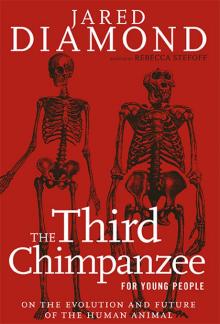 The Third Chimpanzee: The Evolution and Future of the Human Animal
The Third Chimpanzee: The Evolution and Future of the Human Animal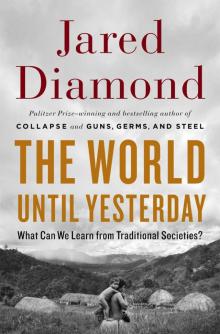 The World Until Yesterday: What Can We Learn From Traditional Societies?
The World Until Yesterday: What Can We Learn From Traditional Societies?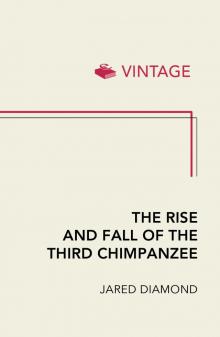 The Rise and Fall of the Third Chimpanzee
The Rise and Fall of the Third Chimpanzee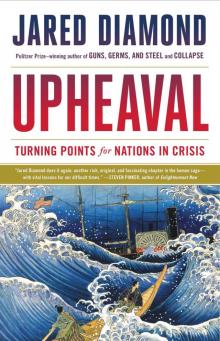 Upheaval: Turning Points for Nations in Crisis
Upheaval: Turning Points for Nations in Crisis Guns, Germs, and Steel
Guns, Germs, and Steel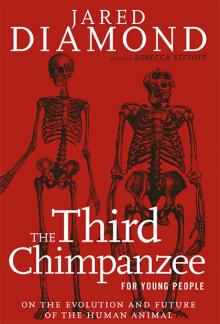 The Third Chimpanzee for Young People
The Third Chimpanzee for Young People Why Is Sex Fun?
Why Is Sex Fun?